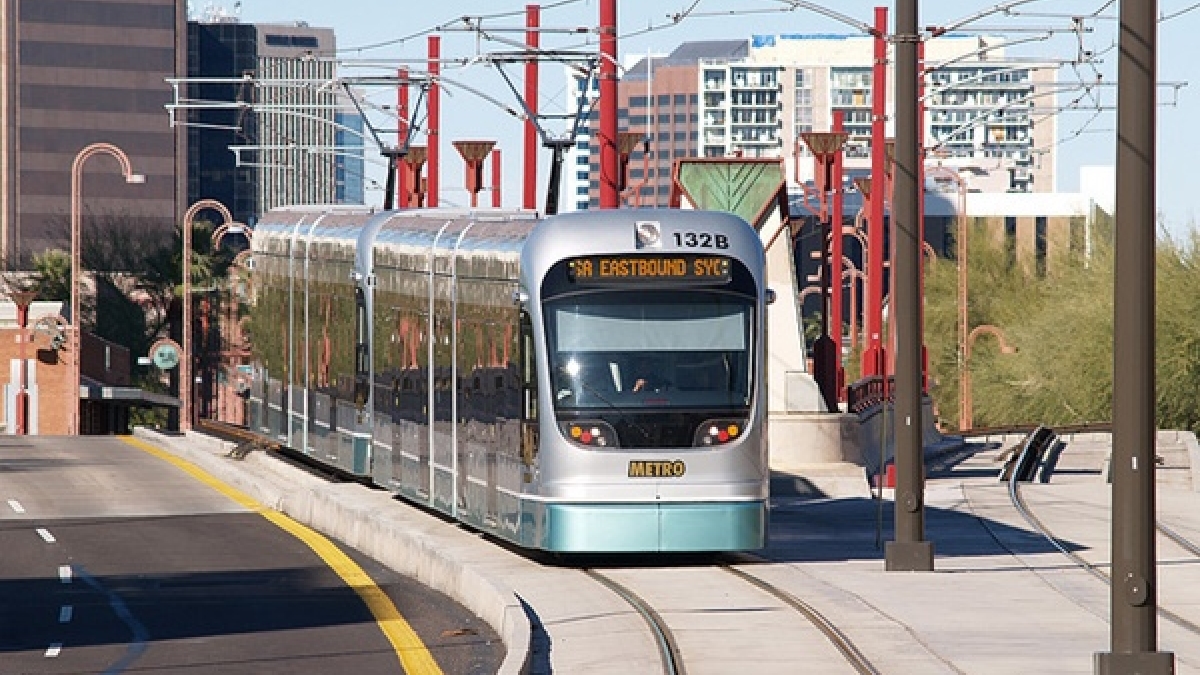ASU students help guide future of public transportation in Phoenix

The future of public transportation in the greater Phoenix area could undergo some changes in the near future, and a group of Arizona State University graduate students appreciate the opportunity to assist.
The Phoenix Public Transit Department established a 35-member citizen committee to examine how to pay for public transportation and get public input. The department asked David Swindell, director of the Center for Urban Innovation in ASU’s College of Public Service and Community Solutions, to assist in creating a public survey to help collect data on how Valley residents feel about various public transit issues.
“The community faces the sunset of the sales tax that currently supports operations and maintenance of the light rail and bus systems in five years,” says Swindell.
Swindell decided to not only undertake the project, but to also integrate graduate students from his PAF 502 Public Service Research II statistics class as part of their course study.
“This was an opportunity to work with real data,” says Master of Public Administration student Chelsea Chotena. “In classes we get a good overview of the theory, and professors can share case studies. But real information has challenges, and this was an opportunity to learn and grow.”
The team of 15 students built an online survey of 19 questions ranging from transit-related (which included socioeconomic and demographic topics that were aimed at highlighting respondents’ usage patterns) to service satisfaction and public opinion about the future of public transportation in the Phoenix region.
The students distributed the survey and received responses from more than 350 people who use public transportation (bus and/or light rail) frequently and from those who do not.
Here are some of the highlights from the data collected:
• Over two-thirds of bus users report being very or somewhat satisfied with bus service. Higher income riders are more satisfied with bus service than lower income riders, and female riders were more satisfied than male riders.
• Approximately 89 percent of light rail users report feeling safe riding the light rail during the day while only 71 percent say they feel safe riding at night.
• Nine out of 10 respondents agree or strongly agree that expanding bus and light rail services is important for the city’s future.
• Those favoring expansion of services prefer funding the expansion through an increase in the sales tax.
• Among respondents who do not use public transportation, the majority (54.2 percent) prefer that any expansion of services be paid for through increased fares. Those who use either light rail or bus services prefer any expansion be paid for through a gasoline tax. Respondents that use both light rail and bus services prefer expanded services be funded by an increased sales tax.
The survey and results were then compiled into a 34-page report and presented to the committee. Members gave Swindell and his students high marks. While students appreciated the praise, they were happy to gain experience working with actual data.
“Being able to understand and process data is critical,” Chotena says. “The experience gave me the most tangible, realistic approach for how to handle and manage data.”
Swindell was pleased that the Phoenix Public Transit Department came to the Center for Urban Innovation and the College of Public Services and Community Solutions for assistance with this project.
"It’s another illustration of the school’s and college’s commitment to the local community and to helping in the development of solutions to public problems,” Swindell says.
Written by Chris Hernandez